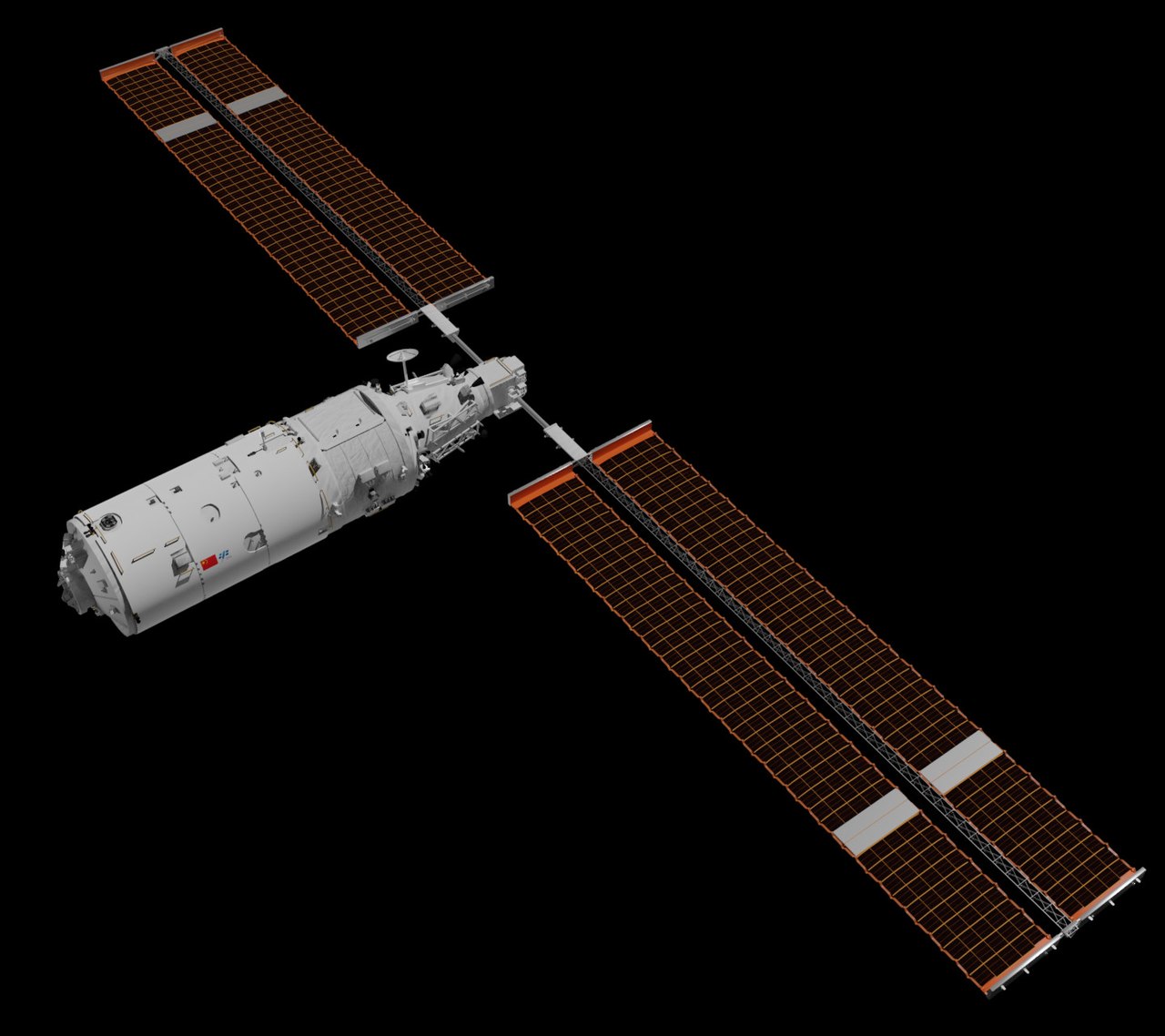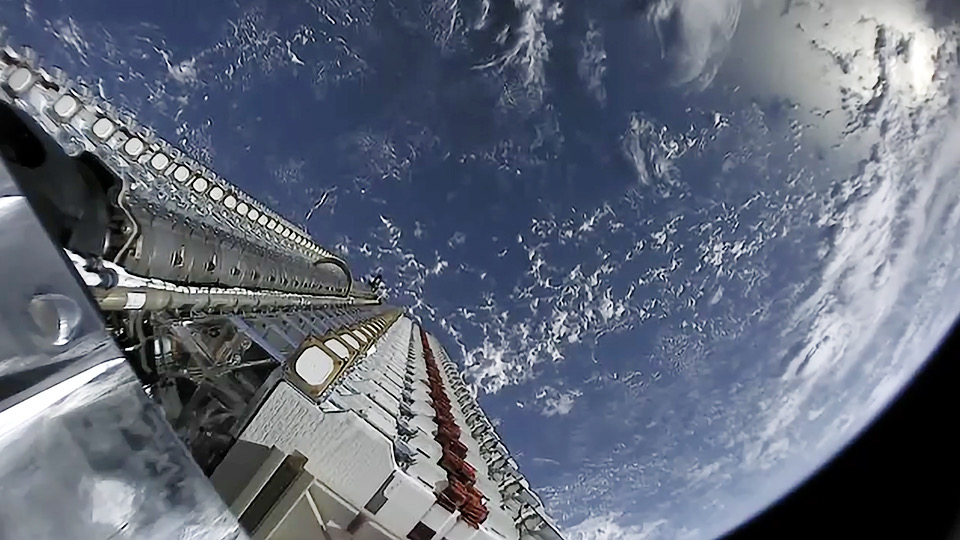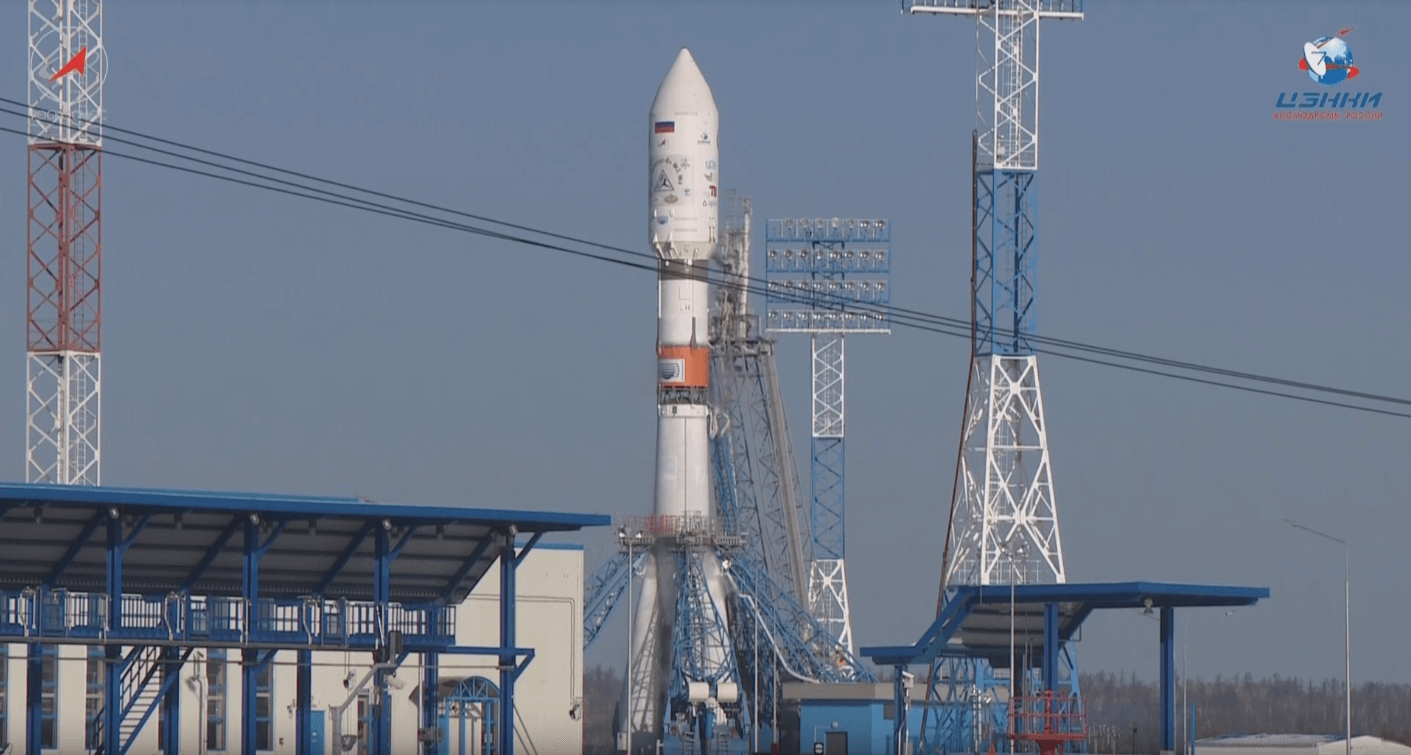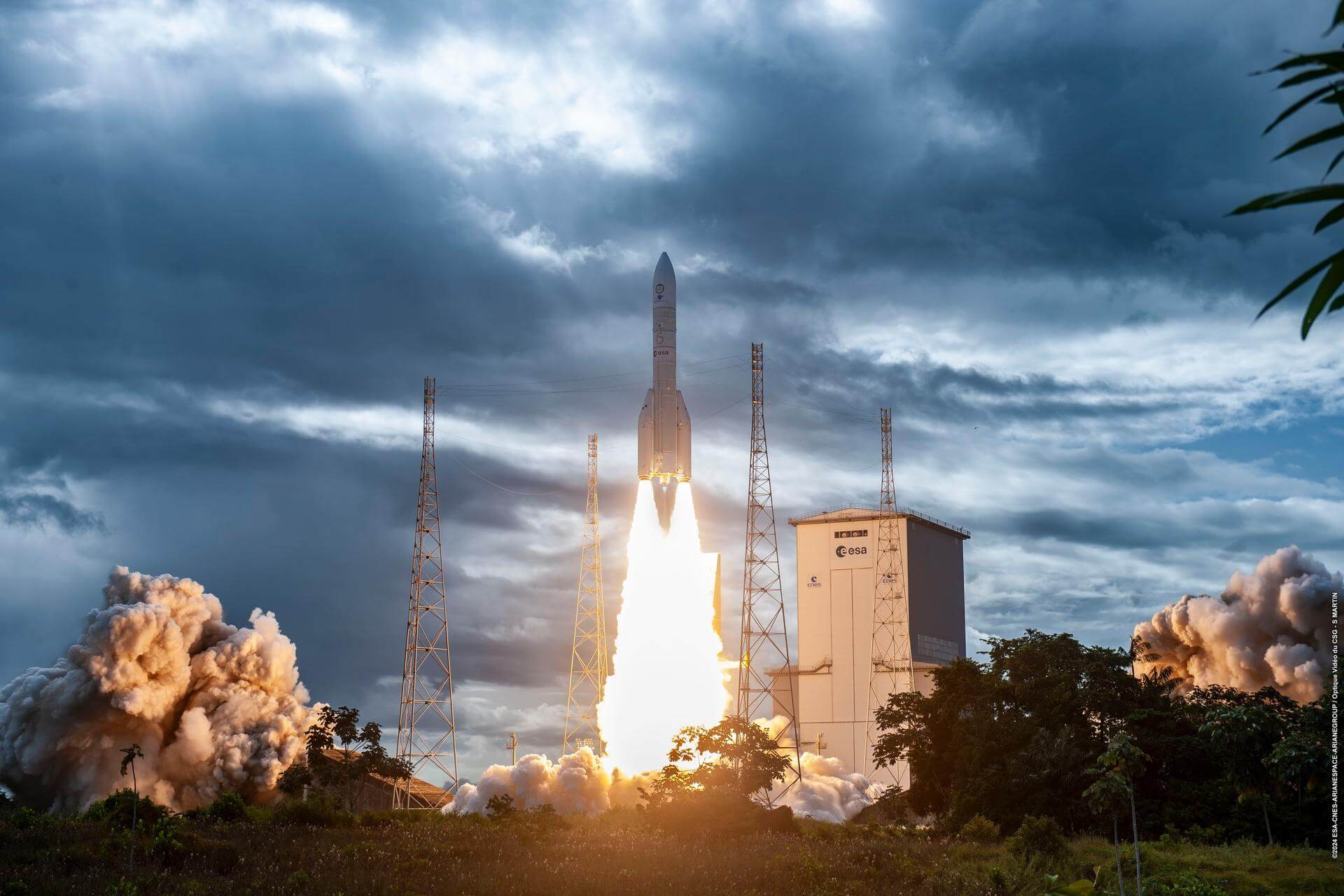· space brief · 6 min read
Space Brief 23 May 2025
Today's briefing highlights a significant increase in the Pentagon's AI budget, upgrades at the Tiangong space station, cyber threats to satellite operations, and the Moon and Venus conjunction.

📄Top Stories
The Pentagon has significantly boosted the budget for Palantir’s AI software, which plays a key role in enhancing battlefield operations, linking this development to satellite tracking enhancements. In space station news, Chinese astronauts successfully enhanced the Tiangong’s defenses against debris. Meanwhile, a cyber threat alert was issued by the US and allies regarding targeting by Russian groups which could impact satellite operations. Lastly, astronomy enthusiasts can look forward to a beautiful celestial event as the Moon and Venus align in the dawn sky.
📰Detailed Coverage
Pentagon Invests Heavily in AI for Enhanced Satellite Tracking
The Pentagon has expanded its investment in artificial intelligence software developed by Palantir, raising the contract ceiling to $1.3 billion. This move is part of a broader strategy to integrate cutting-edge AI tools into military operations, including satellite surveillance and targeting capabilities, under Project Maven.
Project Maven’s expansion underscores the importance of AI in defense, particularly in processing vast amounts of data from satellite feeds to improve decision-making in realtime. This development is a significant step forward for military satellite tracking and operations, aligning with our web app’s features for monitoring satellite activity and data analysis.
Read the full story: SpaceNews
Tiangong Space Station Fortified Against Space Debris
Chinese astronauts have successfully completed an eight-hour spacewalk to install additional debris shields on the Tiangong space station. This proactive measure comes in response to increasing concerns about space debris and its potential to damage vital space infrastructure.
The added shielding enhances the station’s resilience against micrometeoroids and debris, showcasing China’s ongoing efforts to secure its orbiting habitats. Such upgrades are crucial for the safety and longevity of the station and provide essential insights into satellite defense strategies.
Read the full story: Space.com
US and Allies Warn of Cyber Threats to Satellite Operations
An advisory from the US and allied nations warns of a concerted campaign by Russian cyber groups targeting Western IT and defense firms. This cyber espionage activity is focused on disrupting support for Ukraine and could potentially compromise satellite systems that assist military and humanitarian efforts.
The advisory is linked to previous cyber intrusions involving surveillance systems, underscoring the need for robust cybersecurity measures in space-related infrastructure. This threat highlights the critical importance of securing satellite operations, which are vital to both military and civilian services.
Read the full story: Breaking Defense
Astronomical Event: The Moon and Venus Conjunction
Early risers on May 23 can witness a stunning celestial display as the crescent Moon forms a conjunction with Venus. This pairing will be visible in the dawn sky and offers a beautiful spectacle to kick off the Memorial Day weekend.
Such celestial events are not only a visual delight but also serve as reminders of the intricate dynamics of our solar system. For those interested in stargazing, our app provides tracking features for events like these, enhancing the viewing experience with detailed predictions and insights.
Read the full story: Space.com
ATLAS Enhances US Military Satellite Operations with New Software
ATLAS Space Operations has demonstrated its Freedom software platform for secure and scalable satellite operations, validated through trials with the U.S. Air Force Research Lab. This new platform promises enhanced security and efficiency for military satellite communications.
By redefining ground operations within the Hybrid Space Architecture initiative, ATLAS’ software plays a pivotal role in modernizing satellite command and control. This initiative reflects an ongoing shift towards more agile and secure systems crucial for military satellite tracking.
Read the full story: SpaceWar
🛰️Satellite Spotlight
- Satellite Name: OPS 9433 (DSCS 2-3)
- NORAD ID: 06973
- Launch Date: December 13, 1973
- Mission: This satellite was designed for communication purposes and is part of the Defense Communication Satellite System (DSCS), providing secure and reliable military communication.
- Orbit: Geostationary Orbit (GEO)
- Operator: SAMSO/DCA (Space and Missile Systems Organization/Defense Communications Agency)
- Fun Fact: OPS 9433 is notable for its spin-stabilization and despun antennas, a configuration that helps maintain stability while transmitting data.
Track this satellite in real-time on our web app: Track OPS 9433 (DSCS 2-3)
🌌Space Weather
Space weather conditions are currently quiet.
R0 - S0 - G0
Next 24 Hours: For satellite owners and operators, there is good news: no risk of radio blackouts or solar radiation storms is expected during this period. Ground-based radars and telescopes should operate without interruptions, as no G1 (Minor) or greater geomagnetic storms are on the horizon. Satellite communication users can be confident of clear connections, with stable conditions prevailing. However, from May 23-25, there is a slight chance of R1-R2 (Minor-Moderate) radio blackouts that may require monitoring.
Beyond: Looking further ahead, solar activity is predicted to remain low from May 19 to June 14, 2025. While there is a chance for R1-R2 (Minor-Moderate) events during this period, no proton events are anticipated at geosynchronous orbit. Expect increased greater than 2 MeV electron flux from May 19-23, May 29-June 5, and again on June 14, primarily due to recurrent coronal hole activity.
Geomagnetic conditions are anticipated to be elevated above quiet levels due to several recurrent coronal hole features. G2 (moderate) conditions are likely on May 29 and June 13. Expect G1 (minor) conditions on May 19, 28, and June 14, along with active intervals on May 30-June 1 and June 10. There will be unsettled levels on May 20-23, May 27, June 2-7, and June 11-12, although quiet conditions will take over for the remaining days thereafter. These fluctuations may lead to intermittent drag impacts on Low Earth Orbit (LEO) satellites, which should be accounted for in operational planning.
🚀 Upcoming Space Launches
May 23
-
Russian Space Forces Soyuz 2.1a/Fregat-M:
- Kosmos (Unknown Payload) from Plesetsk Cosmodrome, Russian Federation (07:00 UTC)
- Unknown classified payload for the Russian military.
-
SpaceX Falcon 9 Block 5:
- Starlink Group 11-16 from Vandenberg SFB, CA, USA (20:36 UTC)
- A batch of 27 satellites for the Starlink mega-constellation - SpaceX’s project for a space-based Internet communication system.
May 24
- SpaceX Falcon 9 Block 5:
- Starlink Group 12-22 from Cape Canaveral SFS, FL, USA (17:19 UTC)
- A batch of satellites for the Starlink mega-constellation - SpaceX’s project for a space-based Internet communication system.
May 27
-
SpaceX Falcon 9 Block 5:
- Starlink Group 17-1 from Vandenberg SFB, CA, USA (16:14 UTC)
- A batch of satellites for the Starlink mega-constellation - SpaceX’s project for a space-based Internet communication system.
-
SpaceX Starship:
- Flight 9 from SpaceX Starbase, TX, USA (23:30 UTC)
- 9th test flight of the two-stage Starship launch vehicle.
May 28
-
Rocket Lab Electron:
- Full Stream Ahead (BlackSky Gen-3 2) from Rocket Lab Launch Complex 1, Mahia Peninsula, New Zealand (01:30 UTC)
- 2nd of the BlackSky Gen-3 high-resolution Earth-imaging satellites.
-
SpaceX Falcon 9 Block 5:
- Starlink Group 10-32 from Kennedy Space Center, FL, USA (13:30 UTC)
- A batch of satellites for the Starlink mega-constellation - SpaceX’s project for a space-based Internet communication system.
-
China Aerospace Science and Technology Corporation Long March 3B/E:
- Tianwen-2 from Xichang Satellite Launch Center, People’s Republic of China (17:22 UTC)
- Tianwen-2 is a planned Chinese asteroid sample return and comet orbiter mission. The spacecraft will visit the Near Earth asteroid 469219 Kamoʻoalewa (2016 HO3), collecting samples and is expected to return them to Earth around 2.5 years after launch.
May 30
- SpaceX Falcon 9 Block 5:
- Starlink Group 11-18 from Vandenberg SFB, CA, USA (20:24 UTC)
- A batch of satellites for the Starlink mega-constellation - SpaceX’s project for a space-based Internet communication system.
May 31
- SpaceX Falcon 9 Block 5:
- GPS III SV08 from Cape Canaveral SFS, FL, USA (00:00 UTC)
- Eighth of ten GPS III missions.
Note: Launch dates and times are subject to change due to technical or weather considerations.

Maurice Stellarski





